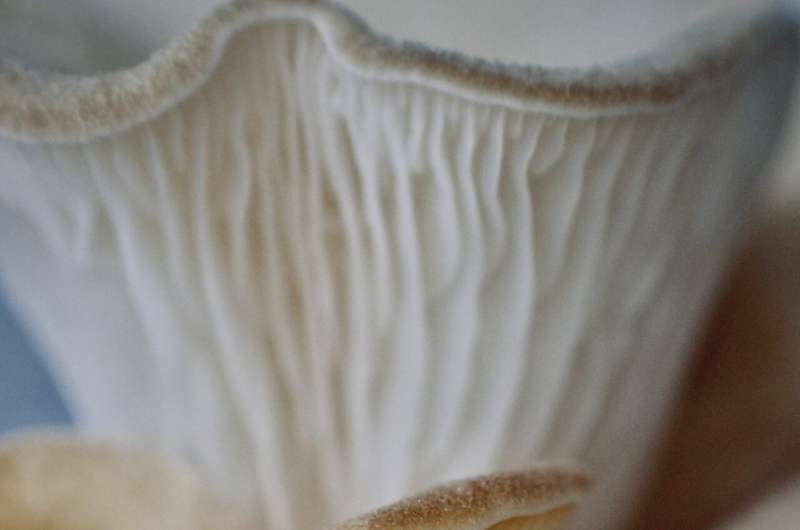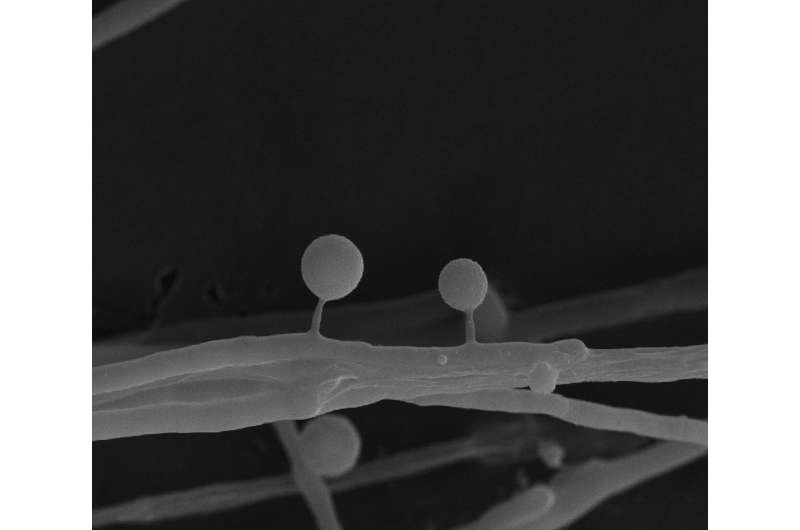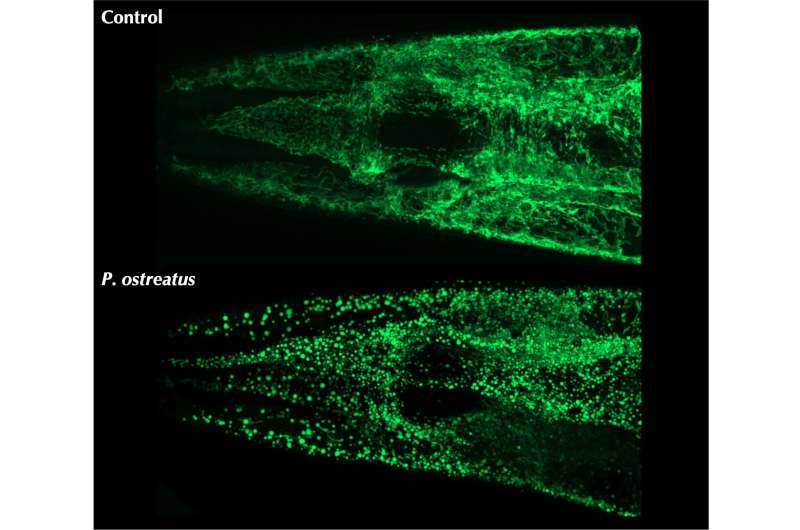P. ostreatus mushroom. Credit: Sheng-Chian Juan
A team of researchers at Academia Sinica in Taiwan, working with two colleagues from Kyoto University in Japan and another from Taipei Medical University, also in Taiwan, has identified the toxic material emitted by oyster mushrooms as a means of killing prey.
In their paper published in Science Advances, the group describes using gas chromatography-mass spectrometry to identify the chemicals used by the carnivorous mushrooms and how they are used to kill prey.
Oyster mushrooms are fairly well known as an edible mushroom, often served at high-end restaurants. They have a taste reminiscent of anise, a flavor akin to licorice. In their natural environment, they are creamy gray and known as one of many carnivorous mushrooms that emit volatile organic compounds.
Prior research has shown that oyster mushrooms are carnivorous—they kill and consume nematodes. Prior research has also shown that the means by which the oysters are able to kill their prey involves emitting a chemical that paralyzes a nematode that happens to venture too closely, followed by the setting off of a calcium wave that kills nematode cells and then their host.
C. elegans paralyzed by contacting a toxocyst on P. ostreatus hyphae. Credit: Ching-Han Lee
To learn more about the substance emitted by the mushrooms, the researchers used gas chromatography-mass spectrometry to identify the material released from the mushroom's toxocysts. The popsicle-shaped structures extend into the water from the mushroom and emit chemicals from their rod-like tips on contact. The researchers discovered the material was 3-octanone, a type of ketone.
-
P. ostreatus mushroom. Credit: Sheng-Chian Juan
-
Scanning electron microscopy (SEM) image of toxocysts on P. ostreatus hyphae. Credit: Yi-Yun Lee
-
Fluorescence imaging of mitochondria in C. elegans hypodermis tissue with mitochondrial GCaMP5 before and after exposing nematodes to P. ostreatus. Credit: Ching-Han Lee
Testing of the ketone on nematodes showed it first led to the worm attempting to flee. Then the worm became sluggish, and soon thereafter, it was paralyzed. They also found that after paralysis set in, a calcium wave was trigged in the worm, leading to widespread cell death, killing the nematode. They further note that the chemical was able to penetrate the worm's plasma membrane and that cell death occurred due to transformation of mitochondria.
Further testing showed that it took a certain amount of the ketone (approximately a 50% concentration) to paralyze and kill the nematodes. The researchers note that 3-octanone, a volatile organic compound, is commonly used as a communication medium for transferring signals between fungi.
A mitochondrial calcium wave propagating throughout the hypodermis tissue after contacting P. ostreatus. Credit: Ching-Han Lee
More information: Ching-Han Lee et al, A carnivorous mushroom paralyzes and kills nematodes via a volatile ketone, Science Advances (2023). DOI: 10.1126/sciadv.ade4809
Journal information: Science Advances
© 2023 Science X Network



























